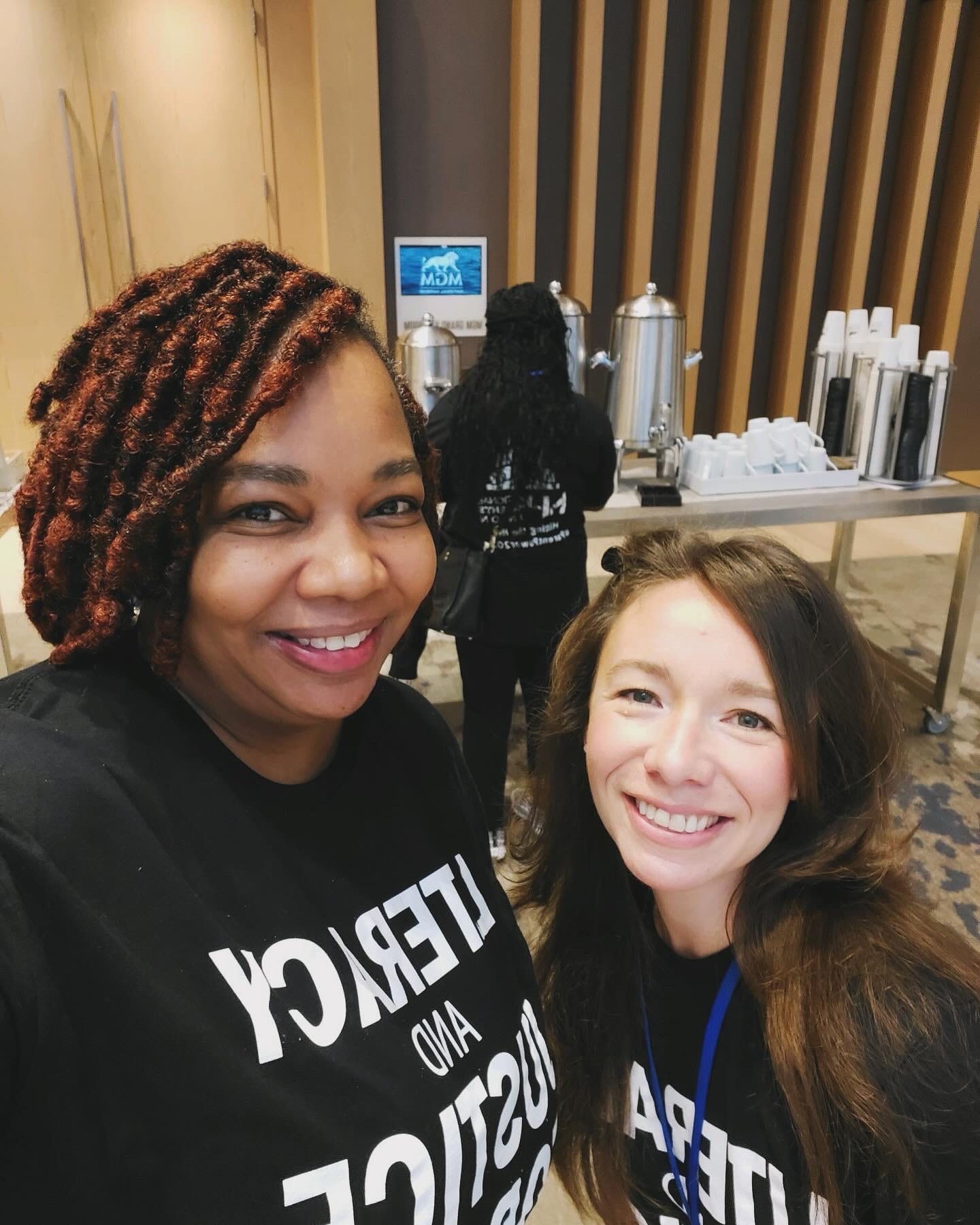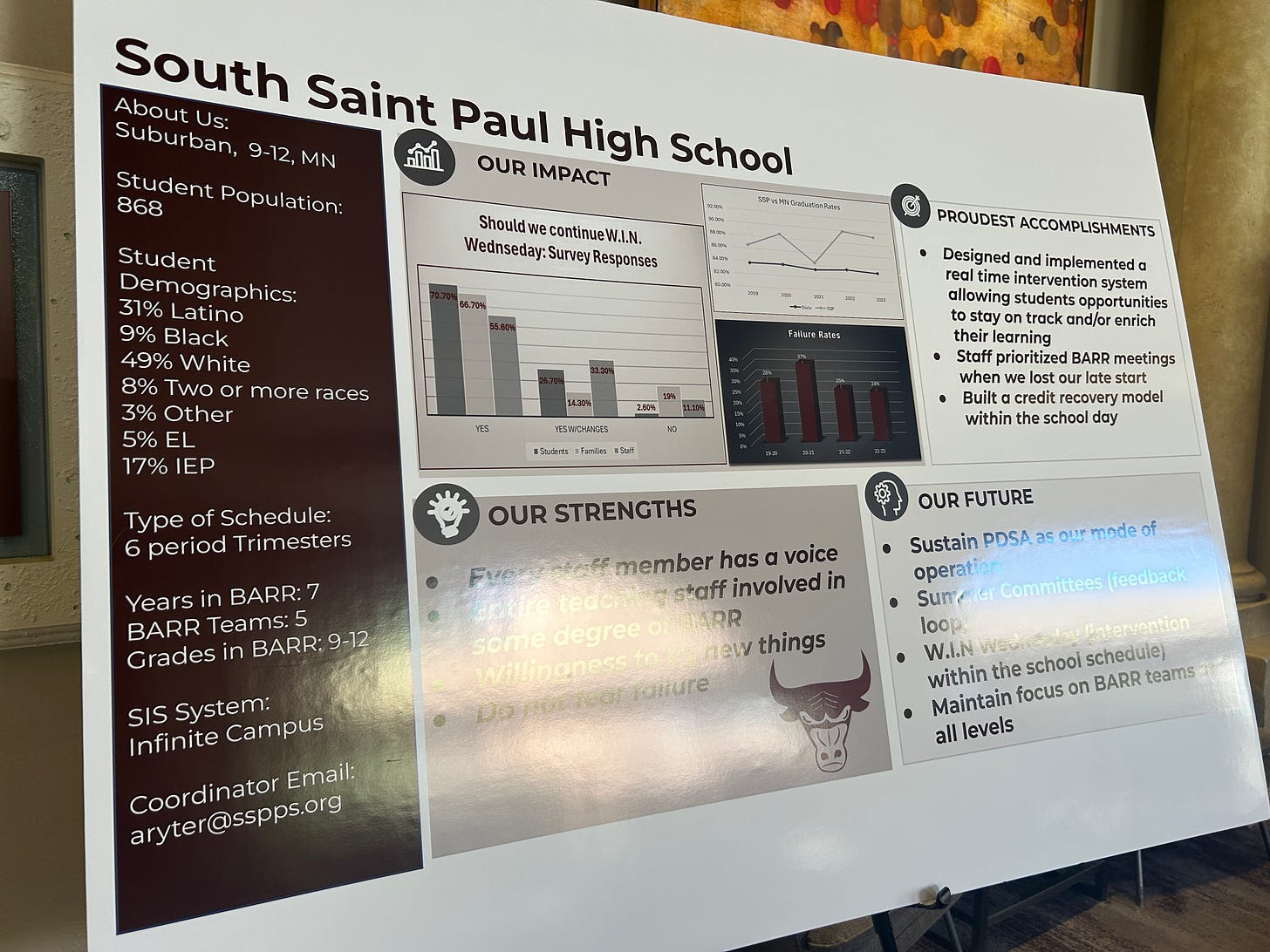Welcome back to the Education Policy Hotlist; I’ve missed our vibrant community!
April was a whirlwind of inspiring events and travel, which took me away from our regular news curation. I had the privilege of joining the National Parent Union at the U.S. Capitol, where hundreds of parents from 47 states united to champion literacy. The sight of families marching around the Capitol and the Department of Education was extraordinary.

At the annual BARR (Building Assets, Reducing Risks) conference, over 700 educators explored the critical intersection of relationships and data in education. The BARR model’s potential is immense, and I’m eager to see it reach every student. Feel free to reach out if you’re curious about the BARR Center.

In Portland, alongside Kali Ladd of the Children’s Institute and Sara Pope from Stand for Children, I participated in the Portland Business Alliance’s panel on the Future of Portland Public Schools. Engaging with business leaders committed to supporting our families and children was invigorating.
Exciting news: I'm now open to consulting and full-time roles
This past year, I’ve enjoyed a different pace working as a consultant with respected organizations like Khan Academy, PIE Network, Our Turn, and Teach Plus, aligning with my purpose. As some of my current projects conclude, I’m open to consulting or full-time roles. I’m also open to relocating for the right position.
If you know of opportunities, please reach out via my calendar or email (christinemtpitts@gmail.com). Still deciding? Here’s what colleagues say about working with me:
“[Christine’s] knowledge and expertise in the field is unmatched. [She] taught me a lot about how to get things going at a state level and how to visualize a roadmap within government institutions. Any organization or corporation would be lucky to have [her] expertise!”
“Remarkable depth of knowledge, strong adaptability, and terrific collaboration across stakeholder groups.”
“… trust based collaboration from end-to-end.”
Check out my LinkedIn for my latest work. I look forward to connecting soon!
Mark Your Calendars
Learning Policy Institute is hosting a webinar titled Addressing State Teacher Shortages: The Promise of Apprenticeship Programs on May 16th at 2:00 p.m. ET. The conversation will cover teacher apprenticeship programs, including their potential to help address teacher shortages. Learn more and register.
On Wednesday, May 22nd at 3:00 pm ET, Fordham is co-hosting a webinar entitled The Broken Pipeline: Advanced Education Policies at the Local Level with NAGC, AFT, and AASA. Register here.
Registration is open for the 2024 CAN Summit in Denver, CO. Register and look forward to exploring promising school practices driven by effective policies. Check it out.
Teacher Workforce
Staffing shortages and social skills development
Staffing shortages continue to trouble 80% of U.S. public schools, with principals worried about the impact on class sizes and staff duties. Despite these challenges, 85% of schools believe their culture fosters the development of students’ social and emotional skills, a crucial aspect of education that supports overall student success. Public understanding of these issues is vital for community support and advocacy for improved educational conditions. Learn more about the School Pulse Panel results.
Teacher evaluation’s missteps
Tim Daly is reflecting on the shortcomings of teacher evaluation reforms, noting that the use of value-added scores was problematic, and the reforms were pushed onto uninterested districts and schools. This critique is essential to understand as it sheds light on the complexities of teacher evaluation efforts — which will likely swing into the spotlight in the coming years as schools undertake belt-tightening and a more critical review of expenditures.
Improving teacher preparation programs
The National Academy of Education released a consensus report on evaluating and improving teacher preparation programs, emphasizing the need for program improvement, accountability, and consumer information. This is a vital report as it addresses the quality of teacher education, which directly affects future educators' effectiveness and students' success nationwide.
Growth in teacher prep enrollment
Despite a decade-long decline, teacher preparation program enrollment has seen a 12% increase nationally from 2018 through 2022. This trend is significant for the general public as it indicates a positive response to efforts to make teaching a more financially viable profession.
Designing for Student Success
Gen Z’s sense of purpose and happiness
In partnership with the Walton Family Foundation, a new Gallup survey finds that a sense of purpose in school and work is the most influential driver of happiness among Gen Z. However, less than half of middle and high school students feel motivated to attend school. This insight is crucial for educators and policymakers to create engaging and meaningful learning experiences that positively impact students’ well-being.
Ten features for high school success
Education aims to allow every student to learn and thrive, but most U.S. schools are still designed on the “factory model” of learning. A new report from the Learning Policy Institute offers a powerful evidence-based blueprint of 10 features for redesigning high schools to create learning environments that are more humane, enriching, and productive than our current factory models of schooling.
A slam dunk for automatic enrollment
In an innovative approach to advancing math education, automatic enrollment policies have emerged victorious in the March Math-ness bracket hosted by the Collaborative for Student Success. These policies, particularly effective in North Carolina and Texas, have doubled the number of Black and brown students in advanced math courses, showcasing a scalable and evidence-based model for educational equity.
Mapping school segregation
The 74 Million features an interactive map detailing how school district boundaries in the U.S. contribute to racial and economic segregation. This tool and the accompanying report by New America reveal stark disparities in student demographics and resources, emphasizing the need for policy reform to address these man-made inequities.
“Such jarring school district disparities, which create real-world gaps in learning opportunities for students, exist across the country. America’s patchwork school district borders carry serious consequences for communities and children’s academic outcomes… ”
Chronic Absenteeism and Enrollment
Addressing chronic absenteeism is a state responsibility
Chronic absenteeism has spiked alarmingly in the U.S., with nearly 30% of students affected post-pandemic, according to a report by Attendance Works and the Everyone Graduates Center. States are pivotal in combating this issue, with strategies like publishing timely data and promoting attendance. Understanding these strategies is vital for the public, as chronic absenteeism affects individual students and the educational environment.
A generation disengaged from school
An op-ed by Robert Pondiscio at the American Enterprise Institute discusses the alarming trend of chronic absenteeism among American schoolchildren, suggesting a broader disengagement from social life. This perspective is one to explore as it points to deeper societal issues affecting youth engagement and educational outcomes outside of the typical school day.
Enrollment declines persist
A concerning trend in U.S. education is the steady decline in student enrollment, with public schools serving 1.2 million fewer students compared to pre-pandemic numbers. This decline affects two-thirds of school districts across 37 states, signaling a need for policy adjustments to address this shift's financial and educational implications. Everyone should know how these changes will impact their school funding and resource allocation. Check out the interactive map at The 74!
Student Health and Well-Being
Concerns about student well-being and academic performance
The National Center for Education Statistics unveiled new data indicating significant concerns among school leaders and parents regarding student mental health, bullying, and academic standards. A staggering 85% of public schools reported parental concerns about bullying, while 82% noted worries about their children’s mental health. Moreover, 92% of school principals expressed apprehension about students meeting academic standards, highlighting the need for public awareness and policy action to address these pressing issues in education. Read more about the NCES findings.
Child Medicaid disenrollment concerns
A report from the Center for Children and Families at Georgetown University highlights a significant drop in child Medicaid and CHIP enrollment, with over 4 million fewer children enrolled than the previous year. This decline, known as the Medicaid “unwinding,” is particularly concerning as it suggests many children may have become uninsured, especially in states with high procedural disenrollment rates. The public should be aware of these developments, as they have profound implications for children’s health and well-being nationwide.
LGBTQ youth mental health crisis
A recent survey by The Trevor Project reveals a disturbing trend: 40% of LGBTQ youth considered suicide in the past year, with 30% experiencing victimization at school. These findings highlight the urgent need for supportive school environments and mental health resources, as victimized students are three times more likely to attempt suicide. Understanding these challenges is crucial for policymakers and educators to foster safer, more inclusive schools for all students.
The Business of School
Strengthening school accountability
The National Center for the Improvement of Educational Assessment discusses the importance of aligning school accountability with improvement efforts. The article outlines five guiding principles, emphasizing collaboration and continuous improvement. This perspective is essential for developing effective accountability systems supporting educational progress.
Empowering students as co-pilots in school budgeting
Last month, in collaboration with Our Turn, I unveiled a report highlighting student involvement's transformative impact on the budgeting process. We interviewed school board members, superintendents, and principals across the country. Our objective was to identify obstacles preventing student participation in school budget discussions. The insights we gained were profound, prompting us to create a rubric essential for all school districts to implement in the current budget season. This constructive, judgment-free rubric enables educational leaders to discard antiquated attitudes and positions students as active partners in fiscal dialogues. Check out the report!
High School and Postsecondary Pathways
Apprenticeships vs. college: Divergent paths to success
The debate between the value of apprenticeships and traditional college education is highlighted in two pieces from Education Next, where experts discuss the merits and challenges of each pathway. With college costs soaring and entry-level jobs underpaying, apprenticeships offer a practical earn-and-learn alternative, emphasizing the need for policymakers to consider diverse educational routes. This conversation is crucial for the public as it impacts future workforce development and the accessibility of post-secondary success.
Internships for every high schooler in Indiana
Victory College Prep in Indianapolis has integrated internships into the school curriculum for all juniors and seniors, a move recognized by the Indiana Department of Education with an Excellence in Student Pathways award. This program is essential as it exemplifies a successful work-based learning model, preparing students for the workforce and potentially transforming high school education.
Early Literacy
Lawmakers’ next steps for literacy
ExcelinEd outlines four critical steps for lawmakers to bolster early literacy policies, a foundational element for children’s success. The guide emphasizes support for teachers, assessment and parent notification, instruction and intervention, and retention and intervention, aiming to improve literacy rates where only one-third of fourth graders are proficient readers. Public awareness of these steps is essential as literacy is crucial to long-term educational and life outcomes.
ICYMI
Last month, I spoke with my friend Rachael Maves, Chief of Policy and Research at Parsec. We covered my evolving thinking on community engagement, ownership, and student empowerment in the educational sphere. For those who may not know, Parsec is at the forefront of integrating student perspectives into our core operations through cutting-edge technology and a fresh approach to gathering student feedback.











Declining enrollment scares me so much.
What is going to happen to all these kids? I see it in my 10th grade classroom. Students claim they are unenrolling to attend an online school only to return later having not attended any such school. Now, "I'm going online" is just code for "I'm dropping out."